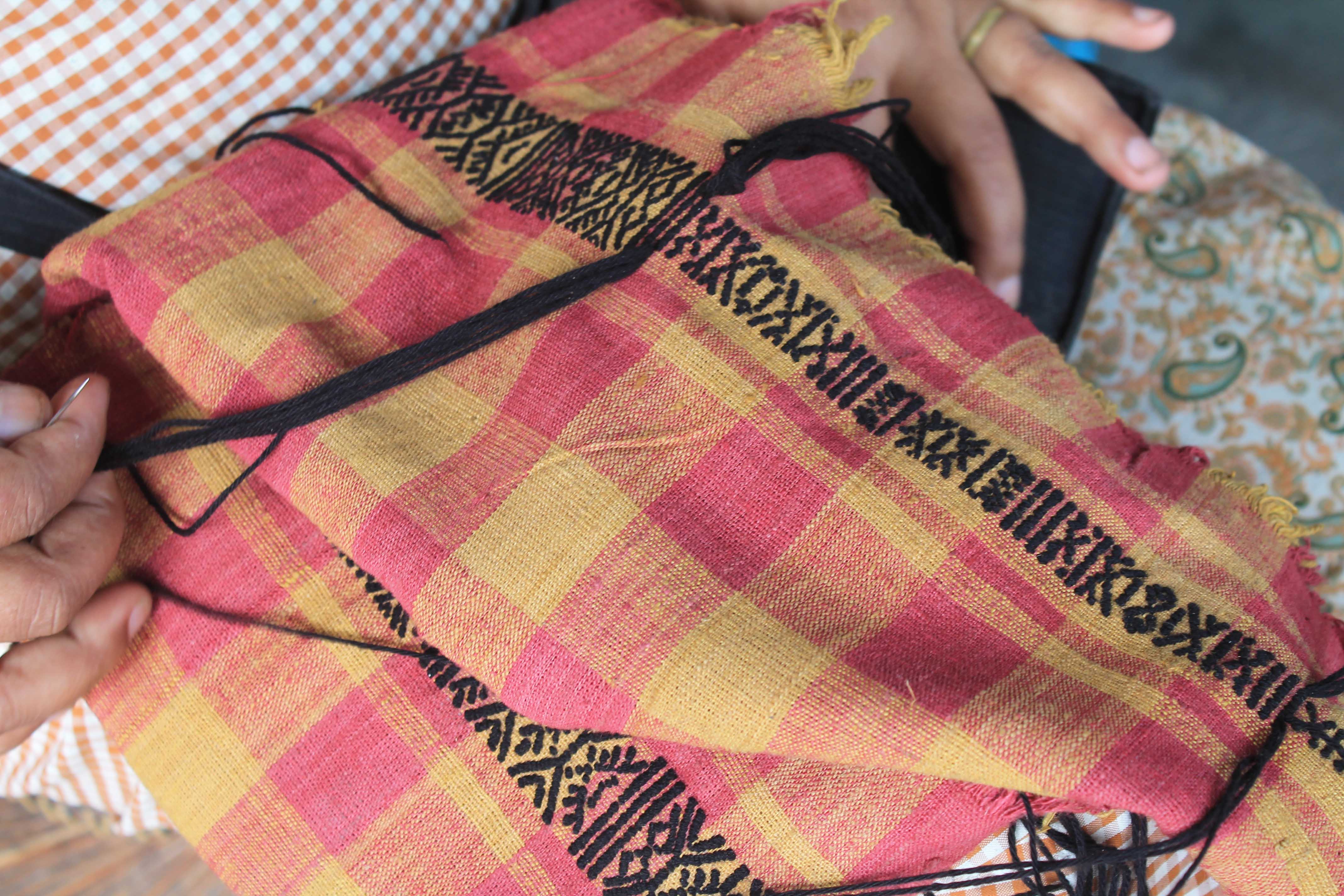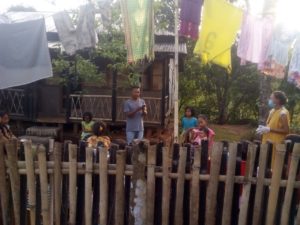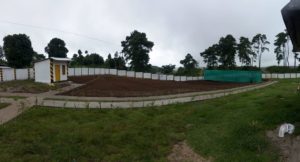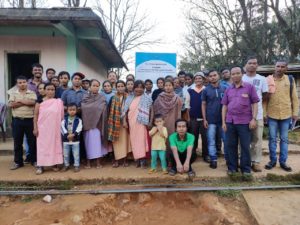The only known village for Khneng embroidery, Mustoh village, is located near the Bangladesh border in Shella Bholaganj Block of East Khasi Hills district in Meghalaya, India. It is situated 80km away from the State’s capital, Shillong.

“The art of Khneng embroidery can be traced back to around 200 years ago” said Niarit Bliw, though the history is not clear as to how it came to life but all they know is that the embroidery is stitched on the Eri fabric (a silk locally known as jain ryndia) to decorate the border of their traditional garments. Therefore, the genesis of the word ‘Khneng’ (a local Khasi word) basically means ‘border’. The inspiration for the embroidery comes from a local insect in the surrounding called ‘ktiar’, which resembles a centipede. A single line of a thick band is stitched on one side of the ‘jaiñpïen’ (a wrap-around) vertically. On a shawl, a line of a thicker and thinner band of Khneng embroidery is stitched horizontally. Two lines of embroidery are always stitched together on the shawl.
The fabric which is regularly used as the base cloth for the Khneng is the Eri silk. The Eri fabrics are not locally woven in the village but are bought from another district in Meghalaya, mainly from Ri-Bhoi District which is approximately 134 km from Mustoh village.
Women are the majority of the population that work with Khneng embroidery. The techniques that are used in the art of Khneng embroidery are needles and threads with basic running stitches and with attentive application of the mind, eyes, and hands. One of the most important elements in working with the embroidery is the thread count. The thread count gives evenly distributed motifs on the fabric. They start stitching the motifs form the middle part of the Khneng and work their way from there count by count and part by part.
Traditionally, black wool is used on the checked Eri fabric because it balances the thickness of the fabric and the spaces of the checks. Currently, NESFAS is also working on contemporizing the colors used on the Eri fabric.
According to the artisans, fabric weaved with thicker yarn is easier to stitch than a finer weaved fabric because it causes less stress to the eyes when counting the weaves/threads. They have also explored with different threads on different fabrics; Eri threads on Eri shawls, Eri threads on cotton shawls, cotton thread on Eri shawls, thinner wool in Eri and cotton shawls. However, the artisans expressed that cotton threads are more suitable to use on Eri fabric, both coarse and fine quality. Artisans have a difficult time to stitch on a finer quality Eri fabric because their eyes get confused when counting the threads, so, they tend to distribute the spaces between the motifs by eyeballing it.

On a daily basis, the artisans work 6 to 7 hours on the Khneng embroidery. They can complete a 24 inches’ shawl in 18 to 24 hours, wider shawls in 36 to 42 hours and small mufflers take only 12 to 24 hours. The smaller motifs can be completed in 8 to 16 hours.
Back in 2015 and 2016, there were only three artisans who mastered the art of Khneng embroidery. In these two years, NESFAS organized workshops on the preservation of Khneng and capacity building of the Artisans’, under the constant support and guidance of Lajoplin Nongsiej and Anna Louise Meynell who have been working closely with the artisans for years.
As part of a follow up programme and with the purpose of sustaining the art, a team from NESFAS visited Mustoh from the 21st to 22nd June 2018. Presently, there are around 10 female artisans who are engaged in the art of Khneng embroidery. During this visit, the team members took the initiative to help and assist them in strengthening their skill and passion towards the art by forming a group. NESFAS in collaboration with the artisans, formed a group named “Mei Ramew Khneng Embroidery Society, Mustoh”. Within this group, they aim to revive the dying art and enhance skill level and market sensitization. This group will also work to contemporize products with Khneng embroidery and try to increase the number of artisans within their society to sustain this traditional embroidery technique.
The group presently includes a total of 10 members. The artisans also shared that they face a number of problems with the Khneng embroidery; they get seasonal orders from very few clients and find it difficult to transfer knowledge from the elder Khneng artisans to the younger generation. Khneng embroidery alone would not be a viable livelihood activity at present. Therefore, these local artisans are also involved in other local livelihood activities like teaching, maintaining small local shops and mainly farming. Cultivation of pineapples, mangos, sohramdieng, jack fruit, litchi, wild pepper and arecanut form a major part of their income from sale in weekly ‘haats’(local markets).
NESFAS aims to enhance local livelihood activities, thus the artisans need a proper platform to showcase and market to sell their products. The group will work towards refining the art and amplify the skills of the local youth who are interested in Khneng embroidery.





Pingback: TEXTILES OF MEGHALAYA - TEXTILE VALUE CHAIN